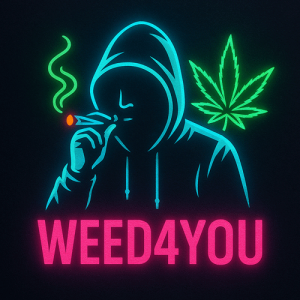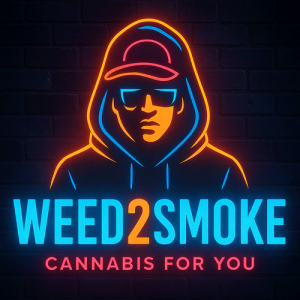Telegrass has gained attention as an online community focused on cannabis-related information and commerce. Initially, this platform emerged to provide a space for individuals interested in discussing cannabis without fear of disclosure. Over time, Telegrass evolved into a multifaceted network, sparking debates about legality, safety, and cultural impact.
Top Telegrass Links
⭐️⭐️⭐️⭐️⭐️
Early Origins and Context
The roots of Telegrass trace back to a broader shift in online communication. As social media and chat applications became more accessible, niche communities formed around specific topics. Cannabis enthusiasts were among those who sought private forums to share stories, advice, and recommendations.
In many regions, cannabis laws remained stringent. This environment created a need for an anonymous channel to exchange insights. Enthusiasts found themselves looking for a space where they could discuss consumption methods and legal risks without revealing their real identities.
Telegrass emerged in response to that demand. It allowed registered users to connect with like-minded individuals and learn about a wide range of cannabis strains. The platform also facilitated product reviews and personal anecdotes, helping newcomers avoid misinformation.
Core Features of Telegrass
Telegrass is often described as a hybrid between social media and a marketplace. Users join channels or groups, each focusing on topics such as strain reviews, cultivation tips, and legal updates. This structure ensures that information remains organized and easy to explore.
Moreover, Telegrass employs a rating system. Users can rate sellers and comment on their experiences. That feedback loop encourages quality control and fosters trust within the community. However, some critics argue that these ratings can be manipulated or faked.
Another notable feature is the platform’s emphasis on privacy. Telegrass users typically adopt aliases, and direct messaging options keep conversations confidential. This anonymity aspect becomes both a benefit and a concern, depending on the perspective of law enforcement or skeptical observers.
Why Anonymity Matters
Anonymity on Telegrass addresses real fears about potential legal consequences. In strict jurisdictions, individuals risk heavy penalties for any involvement with cannabis. Hidden identities let people engage without immediate fear of surveillance or arrest.
Nonetheless, anonymity also invites questionable behavior. Scammers may exploit trust, while minors might access content meant for adults. Critics of Telegrass emphasize that verifying user identities is nearly impossible. As a result, some argue that the platform inadvertently facilitates underage access.
Still, defenders of anonymity claim it is crucial for open discourse. They believe that stigma and legal uncertainty can silence honest conversations. Telegrass users often highlight harm reduction and informed decision-making, which thrive when participants feel safe to speak.
Community and Culture
Communities like Telegrass extend beyond mere transactions. Members frequently share personal experiences, from medical conditions that benefit from cannabis to culinary recipes and creative projects. This sense of camaraderie influences how newcomers perceive cannabis culture as inclusive and supportive.
Many Telegrass participants value the relaxed tone and willingness to help each other. Cannabis novices encounter experienced users who offer cultivation tips or dosage guidelines. This mentorship aspect fosters a communal identity, characterized by openness and acceptance.
In addition, cultural expressions flourish within the platform. Some users post artwork inspired by cannabis, while others discuss the plant’s historical significance. Telegrass can thus serve as a hub for cultural exchange, uniting people with diverse backgrounds and interests.
Legal Landscape and Regulation
Cannabis regulations vary worldwide. Some nations have adopted liberal approaches, permitting medical or even recreational use. Others maintain strict prohibitions. Telegrass operates in a complex environment, where legal status ranges from fully illegal to fully legal, depending on geographic location.
In places with harsh penalties, Telegrass’s anonymity gains heightened importance. Users fear law enforcement might infiltrate online groups or monitor known marketplaces. Hence, they rely on encrypted channels and aliases to keep their activities discreet.
Conversely, in regions embracing legalization, Telegrass may face different kinds of scrutiny. Authorities could question the platform’s compliance with local regulations on age limits, tax revenues, and product standards. Critics argue that a regulated marketplace is safer for consumers, but Telegrass supporters insist that legal dispensaries do not cover every need.
Controversies and Criticisms
Telegrass has generated heated debates among policymakers, health professionals, and the public. One major criticism is the potential for illegal trading. Although the platform facilitates information sharing, many suspect that actual transactions happen covertly within private chats.
Opponents argue that any unregulated market poses significant risks, including adulterated products, lack of age verification, and possible involvement of organized crime. They also contend that Telegrass normalizes cannabis use, which some see as harmful to vulnerable populations.
On the other hand, proponents of Telegrass highlight its educational value. They believe that honest dialogue about risks and benefits helps individuals make informed choices. When cannabis is demonized, people turn to underground sources without reliable information, leading to more harm than good.
The Role of Technology
Telegrass leverages evolving communication tools to remain operational. Encrypted messaging apps and private servers shield user activity from prying eyes. Virtual Private Networks (VPNs) also help conceal user locations, complicating law enforcement efforts.
Furthermore, some participants use cryptocurrencies for transactions, though official rules within Telegrass can vary. Cryptocurrencies appeal to those seeking anonymity. They bypass traditional banking systems, but they also introduce volatility and the risk of scams.
As technology advances, Telegrass updates its features. Developers test new encryption methods and user verification strategies. These innovations aim to protect privacy while curbing illegal activities, but critics remain skeptical about the platform’s ability to self-regulate effectively.
Medical and Therapeutic Discussions
A significant portion of Telegrass discussions revolves around medical applications of cannabis. Patients suffering from chronic pain, epilepsy, or anxiety often share their treatment journeys. They detail strain preferences, recommended dosages, and side effects.
Such peer-to-peer support can be invaluable. Individuals who lack local medical cannabis programs find solace in communities like Telegrass. Yet, experts warn that unvetted medical advice can be dangerous. Self-medication without clinical guidance might exacerbate health issues.
Nonetheless, the growing interest in medical cannabis has spurred more research globally. Telegrass participants frequently cite studies, scientific articles, and personal testimonies. The platform thus contributes to a broader conversation about alternative treatments and patient autonomy.
Cultural Perceptions and Stigma
For decades, cannabis faced significant stigma. Many societies demonized the plant, associating it with crime or moral decline. Telegrass and similar platforms challenge these prejudices by providing a venue for positive discussions about cannabis use.
When people share firsthand accounts of responsible consumption, curiosity replaces fear in some cases. Telegrass acts as a digital stage where cannabis can be contextualized. This shift in narrative may influence public opinion, eventually softening harsh legal or social attitudes.
Still, stigma persists. Critics see Telegrass as a threat to public health, believing that open discussions romanticize substance use. Balancing freedom of expression with caution remains an ongoing struggle. Advocates say that rigorous information exchange fosters more responsible behavior, not reckless indulgence.
User Safety and Harm Reduction
Harm reduction is a key topic on Telegrass. Many members promote safe consumption practices, including recommended dosage and tolerance breaks. Discussions often revolve around side effects, interactions with medications, and mindful approaches to using cannabis.
This openness contrasts with clandestine markets where nobody warns newbies about potential hazards. By prioritizing knowledge, Telegrass attempts to reduce risks. However, skeptics maintain that no unregulated forum can fully guarantee product safety.
Still, the harm reduction approach resonates with those who see cannabis as less harmful than other substances. Telegrass fosters a collective sense of responsibility. Experienced users mentor less knowledgeable ones, emphasizing safe environments and mental health considerations.
Impact on Cannabis Legalization Movements
The rising visibility of Telegrass reflects a broader shift in global cannabis perception. Legalization campaigns have gained traction in recent years, relying on evidence-based arguments about cannabis benefits. Telegrass communities can amplify these messages, drawing attention to both scientific data and real-life stories.
By highlighting personal experiences, Telegrass underscores the therapeutic potential of cannabis. Activists often reference these stories in debates on legal reforms. Lawmakers remain divided, but grassroots support continues to grow, encouraged by platforms that normalize cannabis discussions.
However, some officials believe that Telegrass undermines regulated systems. They argue that black-market platforms hamper tax collection and product safety monitoring. Advocates counter that prohibition itself fuels unregulated markets and that open forums are stepping stones toward transparent policies.
Challenges of Fraud and Scams
Wherever anonymity thrives, scams can flourish. Telegrass is no exception. Fraudulent sellers might advertise high-quality strains but deliver subpar products or vanish after receiving payment. Victimized users typically warn others, yet new scams keep appearing.
To combat fraud, Telegrass relies on reputation systems. Buyers share detailed feedback, and admins remove known scammers. Still, a percentage of users inevitably fall victim. This risk underscores the broader dilemma of unregulated, decentralized platforms.
Fraudulent behavior extends beyond product quality. Some scammers fabricate medical claims to sell questionable items. They capitalize on vulnerable individuals seeking quick relief. Hence, Telegrass participants advise caution, urging each other to verify sources and authenticity.
Influence on Younger Audiences
Minors can potentially access Telegrass, sparking ethical concerns. Age restrictions exist in theory, but the platform lacks robust verification. Parents worry that adolescents might learn about or experiment with cannabis prematurely, guided by superficial online advice.
Telegrass defenders argue that teenagers can find information about cannabis anywhere, including mainstream social media. They contend that open communities encourage safer exploration through harm reduction messages. Critics insist that adult-only guidelines are unenforceable without formal regulations.
Policymakers debate how to protect young people from potential harm. Some propose blocking Telegrass entirely, while others suggest regulated channels with verified user identities. Until a consistent framework emerges, the question of youth exposure remains a delicate topic.
Comparative Analysis with Other Platforms
Telegrass is not alone in this domain. Many online spaces cater to cannabis enthusiasts. Reddit hosts various cannabis subforums, while encrypted chat apps support localized weed communities. Each has distinct rules, user bases, and cultural nuances.
Compared to mainstream networks, Telegrass tends to focus more intensely on connecting buyers and sellers. Some see it as a specialized resource, while others label it a breeding ground for illicit trade. The truth lies somewhere in between, shaped by user behavior and moderation efforts.
Telegram-based communities, for instance, have gained popularity due to their encryption features. Telegrass exemplifies how such tools can facilitate niche groupings. Observers note that decentralized approaches challenge regulators, pushing them to adapt or risk losing oversight altogether.
Global Perspectives
Cannabis attitudes differ from region to region. North American markets have seen substantial legalization efforts, leading to regulated dispensaries and tax revenue. Telegrass-style platforms in those areas may focus more on community interaction than covert sales.
In parts of Europe and Latin America, Telegrass faces a patchwork of laws. Some countries tolerate personal use, while others maintain strict prohibition. Users thus rely on digital anonymity to circumvent legal threats, with varied success.
Asian and Middle Eastern nations often enforce severe penalties against cannabis. Here, Telegrass might be one of the only outlets for informed discussion. Still, participants face significant risk if government agencies decide to target the platform aggressively.
The Economics of Telegrass
Telegrass fosters an informal cannabis economy that can operate parallel to official dispensaries. Prices differ based on product quality, region, and supply-demand dynamics. Users typically rely on ratings and reviews to gauge market value.
In fully illegal markets, Telegrass might function as a major conduit for obtaining cannabis. Sellers compete for reputations, and buyers look for reliable, safe products. This dynamic can stabilize some aspects of the underground economy, while exacerbating tension with law enforcement.
Conversely, in areas with partial legalization, Telegrass users might compare legal dispensary offerings with peer-to-peer deals. If official taxes or regulations inflate prices, people might revert to Telegrass for cost-effective solutions. Critics say this undermines legitimate businesses.
User Experience and Interface
Telegrass typically operates through user-friendly messaging apps. Navigation involves joining channels, reading pinned messages, and following admin instructions. New members often must accept rules about respectful communication, disclaimers, and disclaimers regarding local laws.
A typical channel may feature pinned announcements about safe practices or pricing guidelines. Members can scroll through listings, read user feedback, and privately message sellers. The experience feels similar to a digital marketplace but retains a grassroots community vibe.
Nevertheless, friction points exist. Scam alerts, ban announcements, and heated debates occasionally disrupt the flow. Admins must moderate constantly, removing problematic posts. This challenge grows with the community size, testing the limits of volunteer-based oversight.
Self-Governance and Community Rules
Many Telegrass groups adopt self-governing principles. They rely on volunteer moderators to enforce norms: respectful dialogue, no hate speech, no explicit illegal activity. These rules vary between groups, reflecting differences in ideology and focus.
At times, controversies arise when moderators appear biased or too lenient on certain sellers. Users may suspect collusion, which can erode trust. Telegrass participants often propose transparent processes to choose admins and review their decisions.
Debates about free speech versus safety are common. Some members demand stricter content controls, especially regarding medical misinformation. Others champion an open forum. Telegrass thus encapsulates a broader conversation about balancing liberty with responsibility.
Evolution of User Demographics
Over time, the Telegrass user base has expanded. Early adopters were primarily tech-savvy cannabis enthusiasts. Now, the platform attracts a wide audience, from curious newcomers to seasoned connoisseurs seeking rare strains.
Moreover, medical patients searching for alternatives to prescription drugs have joined. Their perspectives often shift discussions toward health and wellness. Telegrass thus becomes a convergence point for diverse motivations and backgrounds.
Yet, the presence of different user segments can create internal tensions. Longtime members occasionally complain about “tourists” or novices who ask repetitive questions. Clashes of perspective are inevitable, but many see them as signs of a thriving, dynamic community.
Reputation Systems and Trust
Trust is critical in any online marketplace, especially where legality is questionable. Telegrass incorporates rating systems and user feedback to signal reliability. Positive reviews build reputations, while negative experiences prompt cautionary tales.
Members often share transaction details, from packaging quality to timeliness. This transparency fosters a sense of accountability. However, some manipulative users might purchase fake endorsements, undermining the system’s credibility.
Despite these flaws, the rating approach is the primary defense against scams. Telegrass exemplifies how decentralized communities attempt to self-regulate. For every dishonest seller, there are others who rely on trust to maintain repeat business.
Debates on Public Health
Health experts observe Telegrass with a mix of concern and curiosity. Some worry that easy cannabis availability encourages higher consumption rates. Others believe that education about responsible use leads to fewer harmful outcomes.
Research indicates that when individuals have reliable information, they often moderate their intake. Telegrass users share tips on dosage and cautionary tales about overindulgence. These discussions align with broader public health goals of prevention and harm reduction.
Nevertheless, critics want more oversight. They argue that purely peer-driven communities cannot replace professional medical advice. While Telegrass fosters knowledge-sharing, it lacks the safeguards that healthcare systems usually provide.
Transition to Mainstream Acceptance
Telegrass reflects an era of shifting attitudes. In many regions, cannabis has transitioned from a taboo subject to a recognized substance with medical potential. Online communities accelerate this transformation by promoting open dialogue.
Growing acceptance also invites commercialization. Some telegrass-like groups partner with brands, launching promotional events or product giveaways. This commercial angle troubles purists who fear that corporate interests might dilute the platform’s grassroots ethos.
Still, mainstream recognition boosts legitimacy in the eyes of some. Cannabis-focused businesses view Telegrass as a marketing channel, while the public sees it as a barometer for shifting cultural norms. The platform stands at the intersection of counterculture and emerging industry.
Balancing Advocacy and Commerce
Advocacy for legalization remains intertwined with commercial opportunities. Telegrass frequently hosts debates about pricing, ethics, and the right to grow at home. This interplay showcases the multifaceted nature of cannabis activism.
Some members prefer a strict advocacy approach, focusing on patient rights, environmental benefits, and social justice. Others embrace market-driven strategies, believing profits can drive broader acceptance. Telegrass channels often spotlight these contrasting perspectives.
A middle ground might involve ethical business practices, transparent labeling, and community engagement. Telegrass members sometimes propose codes of conduct for sellers, urging them to donate to social causes or maintain eco-friendly operations. Whether this ideal is achievable remains a point of contention.
External Influences and Media Coverage
Media outlets occasionally spotlight Telegrass. Stories range from law enforcement crackdowns to personal success narratives. These articles shape public perception, with some emphasizing the community’s educational benefits and others warning of criminal elements.
Such coverage can drive new users to join, eager to see what the fuss is about. It can also draw heightened scrutiny from authorities who feel pressure to respond. Telegrass thus operates under a fluctuating spotlight, influenced by headlines and political currents.
In some cases, major publications highlight the role of Telegrass in changing cannabis discourse. They note the platform’s influence on cultural attitudes. Whether portrayed as a menace or a revolution, Telegrass rarely remains unnoticed.
Future Innovations and Potential Directions
Telegrass’s future hinges on multiple factors. Legislative reforms could normalize online marketplaces, demanding licensing and age verification. Alternatively, harsher crackdowns might force Telegrass deeper underground, relying on more secure encryption methods.
Technological advancements also shape the path ahead. Blockchain-based solutions might offer trust mechanisms that eliminate intermediaries. Smart contracts could automate disputes, verifying product authenticity. Nonetheless, implementing such innovations in an informal setting is complex.
Community-driven approaches could lead to more transparent governance. Telegrass might adopt democratic processes for electing moderators or establishing unified rules. While these measures will not solve every problem, they could enhance accountability and cohesion.
Comparison with Legal Dispensaries
Legal dispensaries represent a stark contrast to Telegrass’s peer-to-peer model. In regulated environments, consumers access lab-tested products and official customer support. They also contribute to public coffers through taxes on sales.
Telegrass supporters note that dispensaries can be expensive or geographically limited. Those without proximity to licensed shops might find Telegrass more practical. Furthermore, some consumers prefer the variety and exclusivity that peer exchanges can offer.
Ultimately, both systems coexist in places with partial legalization. Telegrass acts as a supplement, serving niche interests or offering more competitive pricing. However, authorities may view it as an unwelcome rival to legitimate retailers, complicating policy discussions.
Educational Resources and Quality Control
Telegrass hosts educational channels dedicated to cultivation. Users discuss nutrient ratios, lighting schedules, and pest management strategies. This knowledge base grows as participants share trial-and-error experiences.
Despite the wealth of information, verifying accuracy can be difficult. Agricultural guidelines that work in one climate may not work in another. Telegrass members often advise novices to cross-reference multiple sources before attempting advanced techniques.
Quality control remains a central concern. Unlike regulated dispensaries, Telegrass lacks standardized testing. Some sellers claim organic practices, while others might use chemical additives. Buyers must rely on reviews and personal trust, risking inconsistent product quality.
Social Implications and Policy Debates
Telegrass sparks broader debates about personal freedom versus governmental responsibility. Supporters argue that consenting adults should have the right to share information and transact without excessive control. Opponents warn that unregulated commerce jeopardizes public safety and can invite criminal exploitation.
Policy proposals vary. Some lawmakers suggest integrating Telegrass into regulated frameworks, requiring licenses and official oversight. Others prefer banning it altogether, believing that any cannabis marketplace must be under strict state control.
For many Telegrass members, these debates underscore a generational divide. Younger, tech-savvy users embrace digital autonomy, while traditional authorities fear losing power. Ongoing dialogues will shape how cannabis communities operate within legal systems worldwide.
Ethical Considerations
Telegrass raises ethical questions about drug use, privacy, and social responsibility. Should individuals be free to discuss and trade psychoactive substances online? How can minors be protected without encroaching on adult rights?
Furthermore, the anonymity factor complicates accountability. Anonymous users can engage in deceptive practices or spread misinformation. Moderators strive to maintain order, but they are often volunteers with limited resources.
Balancing ethical imperatives—like harm reduction, privacy, and communal well-being—remains a challenge. Telegrass exemplifies these tensions in real time, forcing participants to reflect on moral boundaries and the consequences of collective choices.
Practical Tips for Newcomers
- Research Local Laws: Before joining Telegrass, check the legal status of cannabis in your region. Penalties can be severe in many places, so awareness of risks is crucial.
- Prioritize Security: Use encrypted apps, strong passwords, and possibly a VPN. Guard personal details to avoid potential legal or privacy pitfalls.
- Assess Reputations: Read user reviews and seller feedback meticulously. Be cautious when encountering deals that seem too good to be true.
- Engage Respectfully: Telegrass thrives on community spirit. Polite, constructive discussions foster trust and improve the overall experience.
Addressing Common Concerns
Some new users worry about the reliability of information. Telegrass relies heavily on peer sharing, so verifying facts is essential. Cross-check different channels or external sources before taking advice on cultivation or medical use.
Others fear entrapment by authorities. While infiltration attempts do occur, Telegrass’s encryption and anonymity make widespread crackdowns difficult. Nonetheless, prudence is wise. Avoid disclosing personal data that could tie you to illegal activities.
Medical claims can also be misleading. Not every anecdote aligns with scientific consensus. Users should consult healthcare professionals for serious conditions. Telegrass can offer support and shared experiences but is not a substitute for expert guidance.
Broader Social Impact
Platforms like Telegrass reflect society’s shifting stance on cannabis. As people grow more open to discussing its benefits and risks, the taboo surrounding the plant diminishes. This openness can prompt progressive reforms and challenge outdated policies.
Conversely, critics worry that such communities promote normalization without adequate safeguards. They argue that decriminalization efforts should coincide with structured public education programs. Telegrass, they say, often operates in a legal gray area, complicating official oversight.
Regardless, Telegrass demonstrates the power of online networks. Digital spaces can unite scattered individuals and amplify their voices. Whether this leads to positive change or unintended consequences depends on how society reconciles freedom, regulation, and health priorities.
Frequently Asked Questions
FAQ 1: Is Telegrass completely anonymous?
Telegrass offers anonymity through aliases and encrypted channels. However, no system is foolproof. Users should employ VPNs and practice digital hygiene, but they must also stay aware of potential risks tied to law enforcement or technical vulnerabilities.
FAQ 2: Does Telegrass endorse illegal activity?
Telegrass primarily provides information. It neither explicitly prohibits nor promotes transactions. Many users believe in personal choice and harm reduction. Yet, local laws vary, so involvement could be illegal depending on your jurisdiction.
FAQ 3: How reliable is the product quality found via Telegrass?
Product quality varies widely. Some sellers maintain high standards, while others may not. Reputation systems help gauge trustworthiness, but no formal testing ensures product safety. Buyers often rely on community reviews and personal experience.
FAQ 4: Are there official authorities or medical experts in Telegrass?
Some members claim to be professionals or medical patients, but official verification is minimal. Telegrass is user-driven, so credentials are not always confirmed. Serious medical questions should be directed to licensed healthcare providers.
FAQ 5: How can I protect minors from Telegrass content?
Telegrass enforces age-related guidelines in theory, but actual verification is limited. Parents should discuss substance use openly and monitor internet habits. Educating minors about cannabis risks and harm reduction is an essential step toward prevention.
External Links for Further Reading
Paragraph 96 For authoritative perspectives on cannabis health research, visit the World Health Organization (WHO) website. Their reports cover the plant’s medical potential and associated risks.
Paragraph 97 To keep track of legal developments and broader social discussions, you may explore articles on BBC News, which often provides in-depth coverage of evolving drug policies worldwide.
Concluding Thoughts
Telegrass represents the complexities of modern cannabis culture. It merges community-driven interactions with the allure of anonymous trade, provoking discussions about legality, health, and ethical boundaries. In many ways, it showcases the changing face of cannabis in the digital age.
Supporters envision a future where informed adults can openly share knowledge and obtain cannabis responsibly. Skeptics point to the lack of regulation, fearing exploitation and public health risks. Telegrass will likely remain at the heart of these debates, mirroring society’s ongoing transformation.
Whether seen as a pioneering force for transparency or a shadowy network complicating drug control, Telegrass cannot be ignored. Its existence challenges outdated norms, motivates legislative discourse, and underscores the internet’s power to shape cultural narratives. The final verdict rests on how societies balance freedom with structure in the years ahead.






